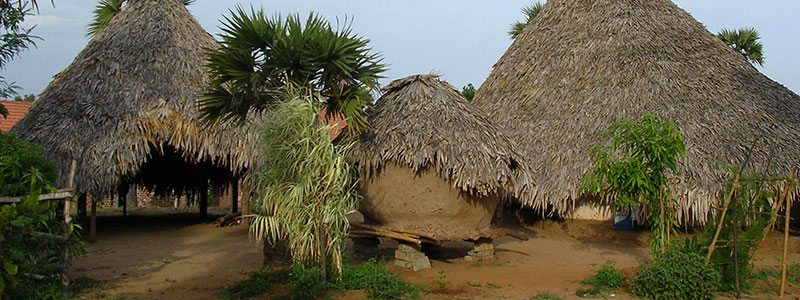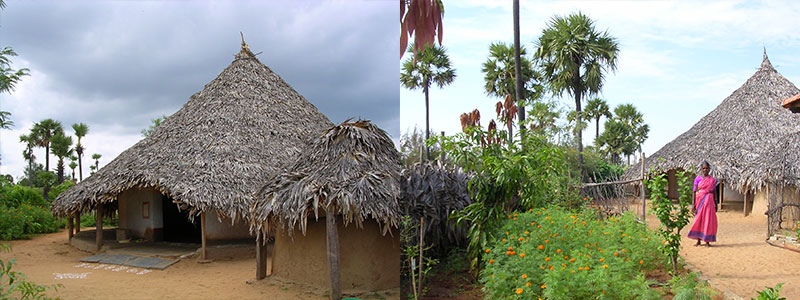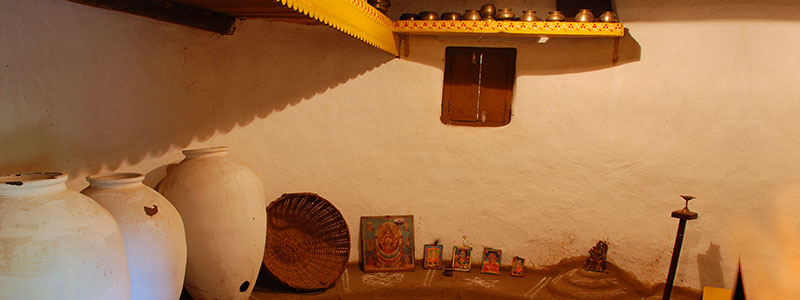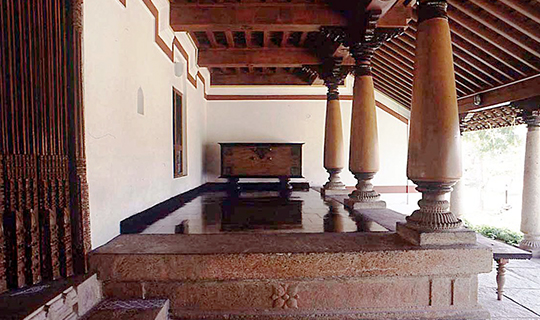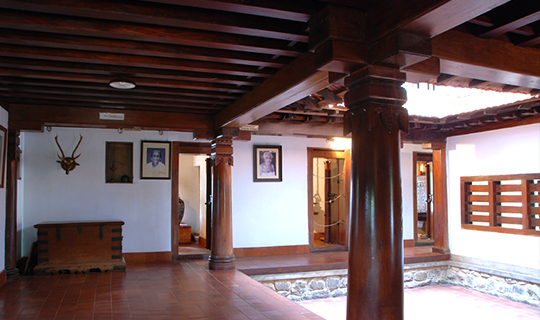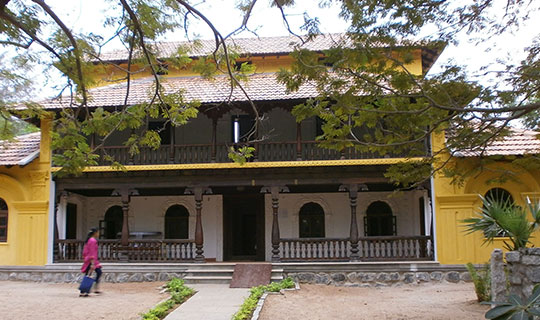Coastal Andhra House
Yellamanchilli Mandal, Visakhapatnam District, Andhra Pradesh.
This house cluster was built by residents of the Haripuram village in Yellamanchilli Mandal, Visakhapatnam District, Andhra Pradesh.
In Andhra, this house form is locally referred to as chuttillu which means a round house (illu stands for house). In a cyclone prone area, fisherman and agricultural farmers build circular houses which nestle closely to form clusters. The shape and the positioning help the houses battle against the raging winds.
The walls of the house are built in mud using the cob wall technique i.e. earth is mixed with water thoroughly to form the right consistency. Then, balls of mud are placed closely in a row and the wall is built up from there. In one day, only 2 feet of wall may be erected. It is allowed to dry, before the next 2 feet is built on the following day. Palmyra timber is used for rafters, palmyra thatch for the roof, and lime wash for the walls. There is an inner flat mud and timber roof above the inner room to provide extra protection from rain and fire. It is important that the slope of the roof be a minimum 45 degrees. A slope less than that causes water to fall through the palm thatch leaves. The roof overhang protects the mud walls from the rain. Because of the need for such an overhang, the roof almost touches the ground around the house. The door is very low and made out of locally available timber.


